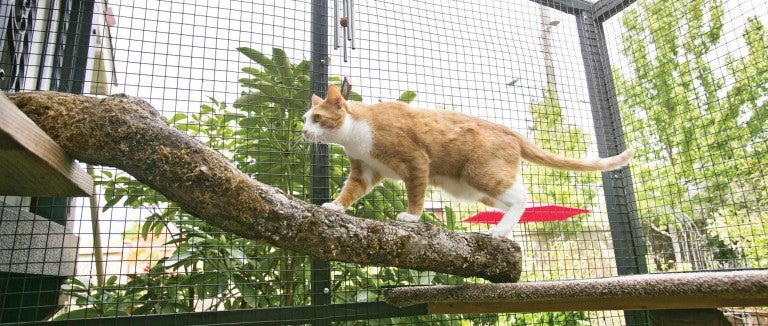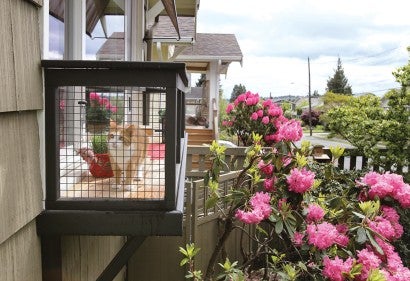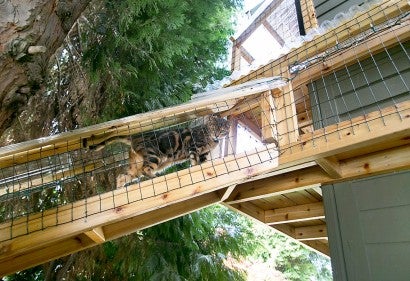So your indoor cat wants to go outdoors—but you know that keeping cats inside is better for their safety and the safety of wild animals. What’s a caring cat guardian to do?
Enter catios, or cat patios. These screened porches designed for cats provide enrichment and a (safe) way to spend time in nature. An outdoor enclosure for cats can be as simple as a window box or as elaborate as a room with a floor, a roof and furniture for people and pets.
Sign up to receive our exclusive e-book full of important information about keeping your cat healthy and happy.

How to build a catio
If you have limited time or minimal carpentry tools and skills, you still have plenty of options for building a catio. Keep costs down by repurposing other materials with some online DIY inspiration, or go the kit route if you’re willing to pay more for convenience and craft.
Follow these guidelines to create* the purrfect outdoor space for you and your cat:
- Materials: Choose a plan that uses wood, metal or other sturdy, nontoxic materials. Repurposing other materials—such as dog kennel panels—can keep costs down.
- Floor: Decide whether you want to build directly on grass, sand or dirt (which some cats might use as a litter box) or construct a floor.
- Roof: Make sure the roof is strong enough to handle any snowfall you might get.
- Perches: A catio is a great place to put a cat tree, shelves or other scratching or climbing structures. You can also install a cat hammock, cat wheel or other pet furniture that might not fit in your home.
- Supervision: Build it where you can see it from your home and consider adding lights if your cat will have nighttime access.
- Safety: Cats are great climbers—and sometimes even wily diggers—so make your catio escape-proof. There should be no openings cats could squeeze through, even on top. Be sure to avoid anything that might snag a collar.
- Protection: Your kitty will need ventilation in warm weather and a cozy place to retreat from the cold, rain and sun. You also want to keep other animals out, so ensure that your catio frame is strong and all components are firmly attached. If there are coyotes, bears or other large predators in your area, a catio may not be right for you, unless it’s extremely sturdy.
*Of course, you can also search online for DIY catio tips and low-cost or free catio plans.
What to include in your catio
Whether you’re purchasing a pre-built catio or DIY-ing it, include the following items to give it a homey touch:
- Water: Offer a bowl of fresh water (especially important on warm days).
- Litter box: Provide a litter box or easy access to the inside of your house.
- Room for you: If you’d like to spend time in the catio, make sure there’s a human-sized door and space for a chair, side table, lamp or whatever you want to include.


